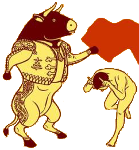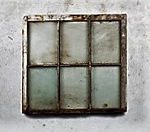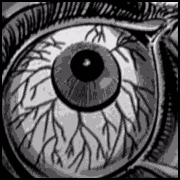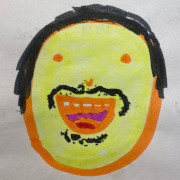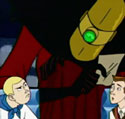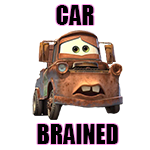|
ColdPie posted:If you just want to play stuff that sounds good to you, then carry on, my friend. This all came up because a guy was suggesting using a D power chord in place of a D major. That's going to have a different feel (which is fine! but it's still not a D major chord). Ok I can see if I want to be patronized I just have to post here. I was merely asking what the point of discussing diatonic notes was in relation to scales (obviously its about describing scales), I didn't need to be talked down to about what major minor and 7th chords are. But you do you, obviously this is what you live for.
|
|
|
|

|
| # ? Jun 8, 2024 20:31 |
|
ewe2 posted:That was useful for explaining what diatonic means, but what does it actually do? What use can you make of it? If it's just a rule of 18th century Western harmony that would get you into trouble if you're writing a fugue then I can see see the application but if I want to understand a bass chart I don't need to know what is specifically diatonic to the scale, I'll either be surprised or unsurprised by the progression. Imagine the notes as a guide. It's just a cheat sheet of what notes will achieve what you want. If I want to play something evil feeling, I can load up an imaginary template of harmonic minor or phrygian dominant and pick notes from there on the neck. But if I want to then play something melodic and sad but not evil, I'll switch to natural minor or phrygian It's just different colors of paint I can pick off a pallette. If I want to paint some neon cyberpunk hellscape, I'm going to pick cyan, magenta, and black off my pallette. If I want to paint a snowy mountains then I'm likely going to mix together a bunch of greys. Same thing with being diatonic. It would clearly look out of place if I make one of the trees in a winter forest have bright red leaves. But what if I want to draw the viewers attention to that spot on the canvas? That red tree would be effective. Same thing with picking a note out of a key.
|
|
|
|
ewe2 posted:That was useful for explaining what diatonic means, but what does it actually do? What use can you make of it? If it's just a rule of 18th century Western harmony that would get you into trouble if you're writing a fugue then I can see see the application but if I want to understand a bass chart I don't need to know what is specifically diatonic to the scale, I'll either be surprised or unsurprised by the progression. each pitch in 12 tone equal temperament is defined by a mathematically precise interval, and each of our scales are a series of intervals which, over the course of history, were chosen by academics for their rich harmonic content. IE: A Major was determined to be A, B, C#, D, E, F#, and G# because it those notes harmonize better with A than the notes in say, F#, G#, A#, B, C#, D#, E#. So, basically, you play within a key to sound nicer. A note that is played purposely that is not contained within the key signature of a piece is called an accidental. Accidentals are very important too, and can have a variety of purposes, one of which can be providing tension with a note that does not sound quite 'right' The really nitty-gritty of WHY these intervals (12√2) were determined has a lot to do with math, history, and the human brain. Complicated stuff.
|
|
|
|
I find if I go too deep into theory I start second guessing myself and will trap myself within things (I wrote a rambly post about being stuck in lydian in a song in one of these threads a whole ago). What I am making use of a lot is using different chord voicings whilst repeating a basic progression to make stuff sound more complex than it is, shifting the third up an octave, or playing the fifth in the bass can really make the same four chords sound different even though actually the notes themselves haven't changed at all.
|
|
|
|
and the 'proof' of it all really is just, sound an A Major Chord. Now sound a chord of A, Eflat, D. Which of those sounds nicer?
|
|
|
|
NonzeroCircle posted:I find if I go too deep into theory I start second guessing myself and will trap myself within things (I wrote a rambly post about being stuck in lydian in a song in one of these threads a whole ago). Apparently this is called "voice leading" and I'm only just now learning how to make the most of it. Such a cool way to make an otherwise tired chord progression sound super badass.
|
|
|
|
Voice leading is basically the process of moving from chord to chord while retaining as many notes in common as possible between the chords. Like, C major and A minor both share C and E, so don't throw the baby out with the bathwater and move the entire chord - just move A down to G by step. There are more rules than that if you're trying to be historically faithful or whatever but they're pretty much irrelevant if you're just interested in finding an ergonomic path through some changes. Voice leading has its origins in vocal music - it's hard to sing a lot of skips in a row without sounding like poo poo, so careful line creation is key.
|
|
|
|
ewe2 posted:Ok I can see if I want to be patronized I just have to post here. I was merely asking what the point of discussing diatonic notes was in relation to scales (obviously its about describing scales), I didn't need to be talked down to about what major minor and 7th chords are. But you do you, obviously this is what you live for. I apologize, I didn't mean to be condescending. I was trying to explain how I have found the concepts useful (how the chords in a key, notes in a chord, and notes in a melody related to each other, etc). I should've phrased it from my perspective.
|
|
|
|
beer gas canister posted:Voice leading is basically the process of moving from chord to chord while retaining as many notes in common as possible between the chords. Like, C major and A minor both share C and E, so don't throw the baby out with the bathwater and move the entire chord - just move A down to G by step. There are more rules than that if you're trying to be historically faithful or whatever but they're pretty much irrelevant if you're just interested in finding an ergonomic path through some changes. Voice leading has its origins in vocal music - it's hard to sing a lot of skips in a row without sounding like poo poo, so careful line creation is key. Ooooohhhh ok I get it now. I know exactly how that works and some song examples that do it. I thought it was where you have one sort of melody on the base notes then another being played with the upper register notes, or something like that.
|
|
|
|
Lol. I love that movie. I have no clue what anyoneís talking about. I think I need to purchase a musical theory for dummies book.
|
|
|
|
Spanish Manlove posted:Ooooohhhh ok I get it now. I know exactly how that works and some song examples that do it. The bass movement is a part of it. Harmonizing a melody is similar to triangulating coordinates - when you have a melody note, there are a limited number of other notes from a scale that can be chosen to create triads. In the key of C major, if an E is the melody note, by adding 2 more notes you could create any of the following (pitches listed from high to low): C major triad (ECG) E minor triad (EBG) A minor triad (ECA) Historically, there were a few hard rules (better to say traditions, since they were often disregarded for whatever reason) regarding the intervals created by this process, which spawned the sets of chord changes that often use today. Voice leading (governed by the practices of Counterpoint) actually precede the emphasis on what we call triads today, which is part of the reason that this information is so obtuse to us. Chords are a byproduct of counterpoint. beer gas canister fucked around with this message at 01:21 on Dec 10, 2020 |
|
|
|
beer gas canister posted:The bass movement is a part of it. Harmonizing a melody is similar to triangulating coordinates - when you have a melody note, there are a limited number of other notes from a scale that can be chosen to create triads. So here's an old song I wrote and i accidentally wrote the first chord progression with voice leading. I thought it was cool to have the first three chords have the same top parts while I descend the root notes. Good to know the actual term for what I was doing. It's technically in B minor https://soundcloud.com/lfranco321/bminor-2017-drum3/s-vFCTr So the chords are: A shape Em9(add13?) x75777 D 6/9 x54777 A shape Bmin x24432 C shape Amaj triad 542xxx Torture shape Gsus2 357xxx G power chord
|
|
|
|
This gave me the shits. Thanks!
|
|
|
|
while we're on theory chat would someone mind explaining 2nd and 4th vs. 9th and 11th? i assume that on piano where the chords you're playing are only roughly an octave wide it would tell you what exact note you're adding, but for example in a standard Asus2 chord x022000 aren't you adding a 9th above the bass note?
|
|
|
|
2nd and 4th usually replace a 3rd (creating a suspension) but 9, 11, 13 are added to the triad. Not necessarily a 9th higher tho - voicing can be any arrangement of notes. Sometimes 9ths, 11ths, or 13ths replace the next nearest note in a triad. 9th replaces root, 11th replaces 3rd (rarely) or 5th, 13th replaces 5th. These substitutions change a little bit depending on if the chord is major, minor, dominant, etc.
beer gas canister fucked around with this message at 04:06 on Dec 10, 2020 |
|
|
|
KeisterBunny posted:while we're on theory chat would someone mind explaining 2nd and 4th vs. 9th and 11th? i assume that on piano where the chords you're playing are only roughly an octave wide it would tell you what exact note you're adding, but for example in a standard Asus2 chord x022000 aren't you adding a 9th above the bass note? Fundamentally, not much difference. A C is a C is a C. But in actuality, a little bit of that has to do with a phenomena in the inner ear called two tone suppression where if F1 and F2 are right next to each other they're a little indistinguishable to the nerves in your inner ear. But if they're separated enough, like say an octave, that doesn't happen as much. So an C4 in an A4minor sounds way different to your ear compared to using a C5 in the same chord because it's interfering with the root note a little bit less.
|
|
|
|
KeisterBunny posted:while we're on theory chat would someone mind explaining 2nd and 4th vs. 9th and 11th? i assume that on piano where the chords you're playing are only roughly an octave wide it would tell you what exact note you're adding, but for example in a standard Asus2 chord x022000 aren't you adding a 9th above the bass note? Chords are generally constructed in thirds going up, so a basic chord would be a root, third, fifth. If you wanna get jazzy and build the chord up from there you add more thirds; a 7 is a third from the fifth, a 9 is a third up from that, and so on. I think part of this is because it's really hard to read a clump of notes that are only half-steps or whole steps apart in sheet music and it usually sounds awful anyway. A sus chord (2 or 4) is a chord where you replace the third with a second or fourth. Because you're replacing that third, you're working inside the original chord, between the root and the fifth. You're using that dissonance of a whole step or occasionally even a half step to gently caress things up a little, and it'll want to resolve to going back to that third. In traditional counterpoint, the suspension was a note you were holding over from the previous chord, so you could go from Dmaj to Csus2 and keep that D note in the chord for a couple beats before going full Cmaj. Guitarists are big dumb idiots so we ignore that part and just play the chord that way and end up with Behind Blue Eyes. Now what gets fun is the difference between a 9 chord, like C9, and an add 9 chord like Cadd9.
|
|
|
|
Oh, another goofy thing about scales is how many whole steps and how many half steps are in there. The idea is that whole steps are more consonant, and half steps are more dissonant. So more half steps in a scale/run then it appears more dissonant.
|
|
|
|
Spanish Manlove posted:Oh, another goofy thing about scales is how many whole steps and how many half steps are in there. The idea is that whole steps are more consonant, and half steps are more dissonant. So more half steps in a scale/run then it appears more dissonant. Ehhh, I don't know if anyone would say harmonic minor is more dissonant than locrian.
|
|
|
|
thanks all, that makes a bit more sense. it definitely helps me thinking of it as building up chords on a staff
|
|
|
|
DOPE FIEND KILLA G posted:
this is confusingly worded my man, i think you know the stuff i'm about to post but i'm about to clarify for other readers. f is not in d major (like you posted in your image above), and there is never a diatonic i chord in a major key. a given scale has a specific chord diatonic to each scale degree.you can definitely play a i over a I though, it's a cool sound! i usually view it as borrowing from the parallel minor. KeisterBunny posted:while we're on theory chat would someone mind explaining 2nd and 4th vs. 9th and 11th? i assume that on piano where the chords you're playing are only roughly an octave wide it would tell you what exact note you're adding, but for example in a standard Asus2 chord x022000 aren't you adding a 9th above the bass note? we typically build chords by stacking thirds, so you don't get to the 9th/11th/13th until you pass the octave (1 3 5 7 9 11 13). voicing is harder on guitar, you can pretty much view them interchangably and just reach for whatever makes your chord easier to grip and nobody will care. don't play the root anyway, roots are lame and they're not your job to play as a guitarist. ewe2 posted:Ok I can see if I want to be patronized I just have to post here. I was merely asking what the point of discussing diatonic notes was in relation to scales (obviously its about describing scales), I didn't need to be talked down to about what major minor and 7th chords are. But you do you, obviously this is what you live for. maybe give people the benefit of the doubt that they're trying to help you based on the post they read instead of freaking out at them dude, we're all friends here and people don't know your exact knowledge level.
|
|
|
|
creamcorn posted:this is confusingly worded my man, i think you know the stuff i'm about to post but i'm about to clarify for other readers. f is not in d major (like you posted in your image above), and there is never a diatonic i chord in a major key. a given scale has a specific chord diatonic to each scale degree.you can definitely play a i over a I though, it's a cool sound! i usually view it as borrowing from the parallel minor. doh! you're right F is not in D Major lol, i was trying to pick arbitrary notes to make a chord as an example and wasn't thinking.
|
|
|
|
Spanish Manlove posted:
I like this name for such a miserable but cool shape.
|
|
|
|
Iirc someone here said that's what joe satriani referred to it when he would teach people.
|
|
|
|
former glory posted:I like this name for such a miserable but cool shape. It's the DMB satellite shape - or if that embarrasses you - the Periphery Marigold shape
|
|
|
|
Thatís just good olí finger yoga.
|
|
|
|
Also there's two camps on how to play that chord: index, middle, pinky index, ring, pinky Neither one is superior, just depends on what's comfortable to you. The webbing/ligaments between ring and pinky on my hand don't like to stretch that much so I do I, M, P
|
|
|
|
Every Breath You Take is extremely fun to play. Iíve been learning it in the original key but on a standard tuned guitar so that 135 stretch is tricky as hell and real fun! Learn that song and youíll have those kinds of chords locked down forever.
|
|
|
|
Kilometers Davis posted:Every Breath You Take is extremely fun to play. Iíve been learning it in the original key but on a standard tuned guitar so that 135 stretch is tricky as hell and real fun! Learn that song and youíll have those kinds of chords locked down forever. Oh yeah that's the other one with that shape. It's brutal for me, especially since you have to move your pointer around and skip strings and stuff. I don't know how it's supposed to be but the Rocksmith version is all middle of the neck and that shape basically only. Edit: like this https://tabs.ultimate-guitar.com/tab/the-police/every-breath-you-take-tabs-470469 havelock fucked around with this message at 20:20 on Dec 10, 2020 |
|
|
|
Nah that's how that song is. It's the left hand version of training under 1000x earths gravity like guitar goku
|
|
|
|
A prom ballad made entirely of handfucker chords is Andy Summers' way of reminding people he was a jazz dork before he was in a New Wave band.
|
|
|
|
What guitar tone is this, basically? A dimed HM-2? https://www.youtube.com/watch?v=SYS4-2INPWA&t=125s
|
|
|
|
Rolabi Wizenard posted:What guitar tone is this, basically? A dimed HM-2? that actually sounds like a metal zone https://www.youtube.com/watch?v=nxRe99Tjlwg&t=73s
|
|
|
|
Metal Zone wins... again!
|
|
|
|
Rolabi Wizenard posted:What guitar tone is this, basically? A dimed HM-2? I think he's just plugged straight into the Quilter.
|
|
|
|
The Revv G3/G4 go there but lol just get an MT-2.
|
|
|
|
havelock posted:Oh yeah that's the other one with that shape. It's brutal for me, especially since you have to move your pointer around and skip strings and stuff.
|
|
|
|
The Leck posted:Now take it in a different direction with the Purple Rain chord - x-6-8-10-8-6 thanks, I hate this. brb going to get an RSI learning this chord and figuring out a riff with it
|
|
|
|
The Leck posted:Now take it in a different direction with the Purple Rain chord - x-6-8-10-8-6 Yeah, I can place my fingers like that and play the notes. No, I can't change to it within a song. Sounds good though!
|
|
|
|

|
| # ? Jun 8, 2024 20:31 |
|
Metal Zone is like 80s thrash and Metal Core is bass-y chugging, right?
|
|
|





